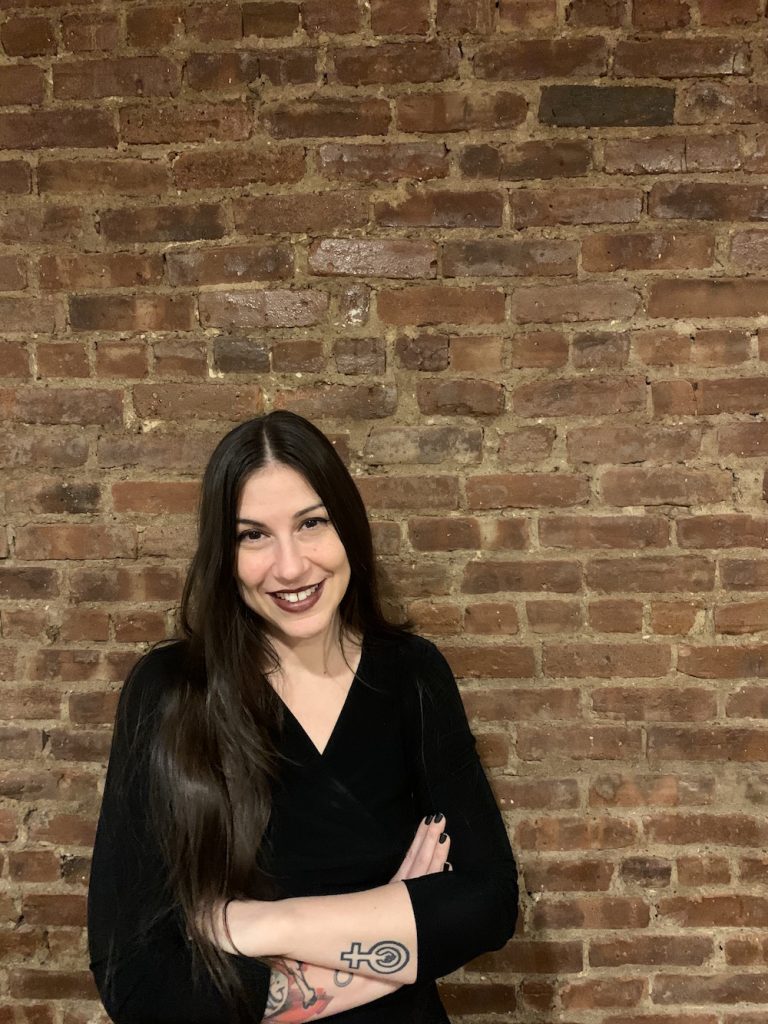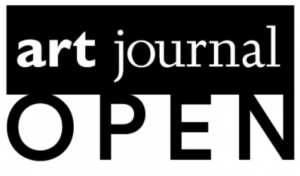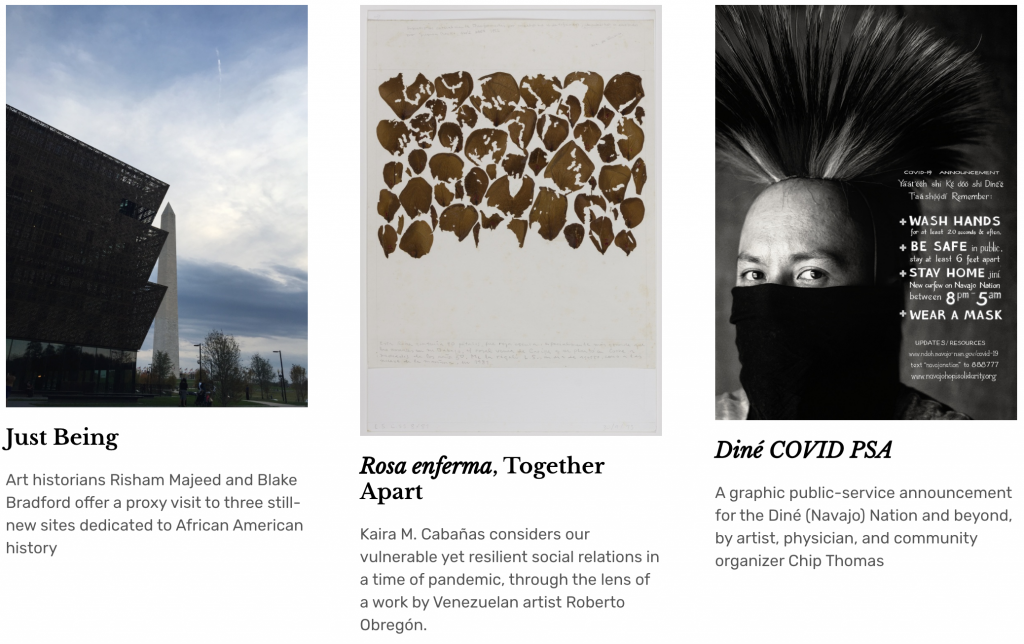CAA News Today
An Interview with Nicole Archer, Editor-in-Chief of Art Journal Open
posted Jun 15, 2020

Nicole Archer.
We’re delighted to introduce readers to Nicole Archer, the current Editor-in-Chief of Art Journal Open (AJO), CAA’s online forum for the visual arts that presents artists’ projects, conversations and interviews, scholarly essays, and other forms of content from across the cultural field. Founded in 2012 as an open-access affiliate of Art Journal, Art Journal Open has been independently edited since 2014. It remains open access and is always free to explore.
Nicole Archer researches contemporary art and design, with an emphasis in textile and garment histories. She is an Assistant Professor in the Department of Art and Design at Montclair State University, where she extends this research through a teaching practice that encourages students to explore politics and aesthetics via close examinations of style, embodiment, and desire.
Amidst the end of the academic year, we corresponded with her over email to learn more about her research, her thoughts on the impact of COVID-19, and her aspirations for Art Journal Open.
Where are you from originally?
I was born in Brooklyn and raised mainly in South Florida, but I spent most of my adult life in San Francisco. In 2018, I returned to New York City.
What pathways led you to the work you do now?
My path has been shaped by a long line of committed feminist art historians, theorists, and activists who have inspired me to pursue work that is wildly curious, ethically responsible, and politically committed to issues of social justice. This, coupled with the fact that I started my college career in the mid-1990s, when the field of Visual Studies was demanding that Art History be held accountable for the role it played in supporting certain cultural hegemonies. It was a time when we were recognizing the benefit that many art historical methods could bring to critical cultural studies (and vice versa).
When did you first become a CAA member?
I have been a CAA member since 2011, but I was an avid reader of Art Journal and The Art Bulletin long before that (thanks to my library access).
What are you working on or thinking about currently?
I am currently finishing a book manuscript that considers how textiles (our key mediums of comfort and security) have been strategically manipulated over the last two decades to aid in the systematic reshaping of what constitutes “legitimate” versus “illegitimate” forms of state violence. The book tells interwoven, materially grounded stories regarding global arts and design practice, on the one hand, and military, police, and governmental action, on the other, to theorize how feelings of insecurity are produced, aesthetically.
What are your thoughts on the impact of COVID-19 on the work you do? On the field?
I think the current pandemic makes two things particularly clear. First, it highlights the important role that art and design can play in helping a society understand (and bear) emergent and acutely difficult circumstances. From movie marathons, artist talks, and book readings that we have enjoyed during our nights spent ‘sheltering in place,’ to the protest banners, photographs, and balcony performances that have led our communities towards acts of collective care and solidarity with one another.
Second, COVID-19 puts the varied inequities that underwrite the field in high relief. It makes the economic precarity of so many cultural workers glaringly obvious, and it forces us to recognize how undervalued cultural work actually is. We need to ask why we have allowed the arts to become so defunded and privatized (despite the social value it clearly delivers). Calls for austerity are circulating, and we know this means further cuts to already underfunded public arts initiatives. We need to resist this and seize this moment as an opportunity to insist on our value. We need to stop undercutting ourselves and our peers, and refuse to accept the exploitation of adjunct professors and graduate student teachers. We must do this as we push against the increasingly prohibitive costs of arts education.
 What led you to be interested in working on Art Journal Open?
What led you to be interested in working on Art Journal Open?
It is our shared responsibility, as arts and design professionals, to constantly “check” our field of practice—to find time to celebrate what we are doing well, and to redress and learn from our shortcomings. I believe this responsibility is a cornerstone of AJO’s editorial mission. Working on AJO is a unique opportunity to hold myself, and others, accountable on this front.
What is your vision for Art Journal Open during your tenure?
I hope to build on the solid foundation laid by the journal’s previous editors, and to further emphasize the open dimension of the publication’s identity—to treat “Open” as a verb, a call to action. We hope to accomplish this by leveraging the journal’s digital format, to open space for more multi-media Creative Projects, and to take advantage of our lack-of-paywall to help draw new readers to AJO and new voices to CAA.

The first three pieces published after Nicole Archer fully took over as Editor-in-Chief of Art Journal Open.
What would you say is your top arts-related recommendation (book, website, resource) at the moment?
I know I am late to this, but I recently found an online radio station called NTS and it is giving me life! I miss trusting my night to a DJ, hearing a new song out of nowhere, and dancing with strangers. I am also tired of soundscapes controlled by algorithms. People should give it a listen in their studios and kitchens, and at their computers and writing desks.
View this post on Instagram
A favorite artwork?
Last year, I had the opportunity to see Sonya Clark’s Monumental Cloth, The Flag We Should Know at the Fabric Workshop and Museum in Philadelphia, and I have not been able to stop thinking about it since. Clark’s work epitomizes the important role art can play in ensuring that political discourse maintains its complexity in the face of a mediascape set on transforming these conversations into flat lines in the sand.
At the center of the exhibit was a monumental replica (15’x30’) of a white dish towel waived by Confederate troops in April 1865, before General E. Lee negotiated the terms of the Confederacy’s surrender. Displayed in a manner akin to the Star Spangled Banner (a centerpiece of the Smithsonian National Museum of American History’s collection), Monumental Cloth presented the Confederate Truce Flag as testament to a decisive moment in US history. It demanded that we ask why we do not know this flag, as a means to discuss anti-Blackness and the persistence of white supremacy in the United States. It provided a poignant, aesthetic counterstrategy to other manners of “memorializing” the Confederacy. The exhibit offered spaces of contemplation alongside opportunities for direct action—by setting-up looms that visitors could use to weave additional Truce Flag replicas, in opposition to the endless flow of commercially produced items made to bear the image of the Confederate Battle Flag.
What are you looking forward to?
Honestly, I am looking forward to the end of the Trump presidency, and to the possibility that the moment we are in could force real political and cultural change; that conversations around universal basic income and healthcare will gain traction, and that widespread recognition of the systemic racism inherent in the criminal justice system will open the door to both abolishing the prison system and defunding and demilitarizing the police that tyrannize communities of color in the US.
NICOLE ARCHER BIOGRAPHY
Nicole Archer researches contemporary art and design, with an emphasis in textile and garment histories. She is an Assistant Professor in the Department of Art and Design at Montclair State University, where she extends this research through a teaching practice that encourages students to explore politics and aesthetics via close examinations of style, embodiment, and desire.
Her work has been published in various journals, edited collections, and arts publications, including: Criticism: A Quarterly Journal for Literature and the Arts; Textile: The Journal of Cloth and Culture; Trap Door: Trans Cultural Production and the Politics of Visibility (published by the New Museum + MIT Press); Where are the Tiny Revolts? (published by the CCA Wattis Institute for Contemporary Arts + Sternberg Press); Women and Performance: A Journal of Feminist Theory.


